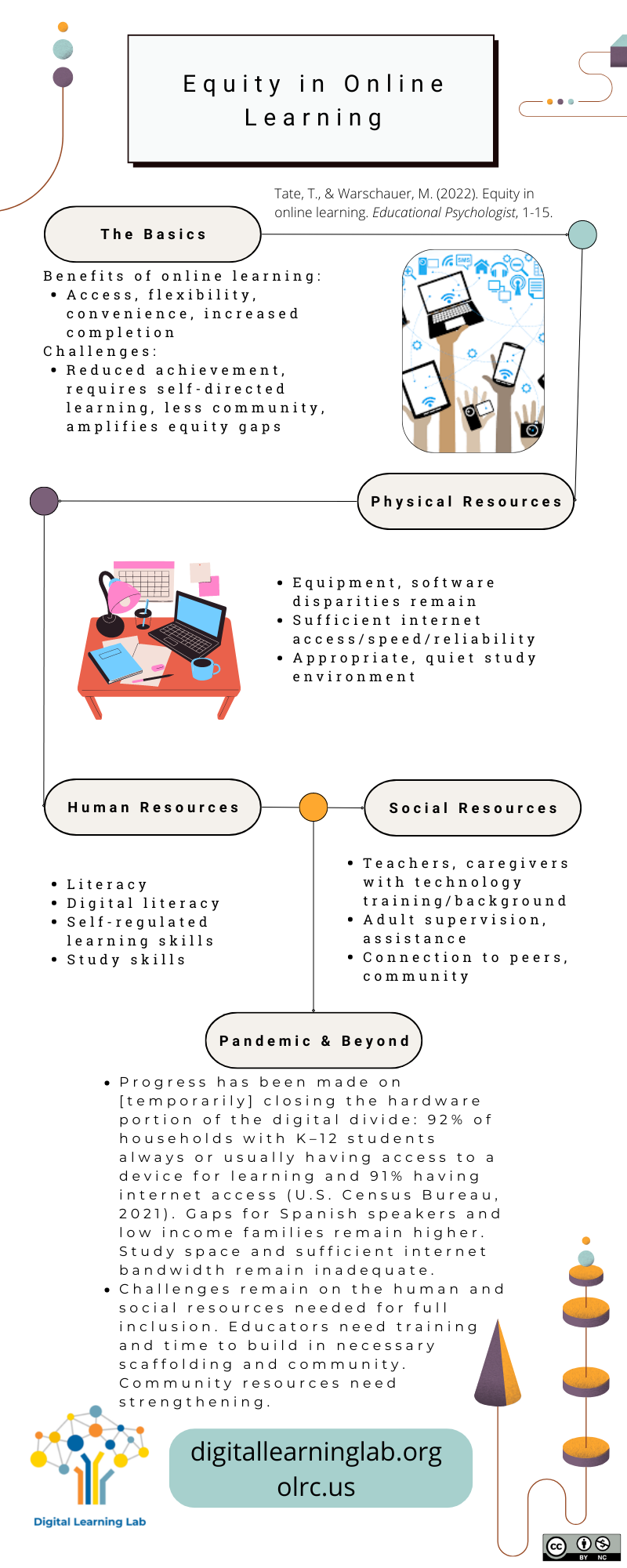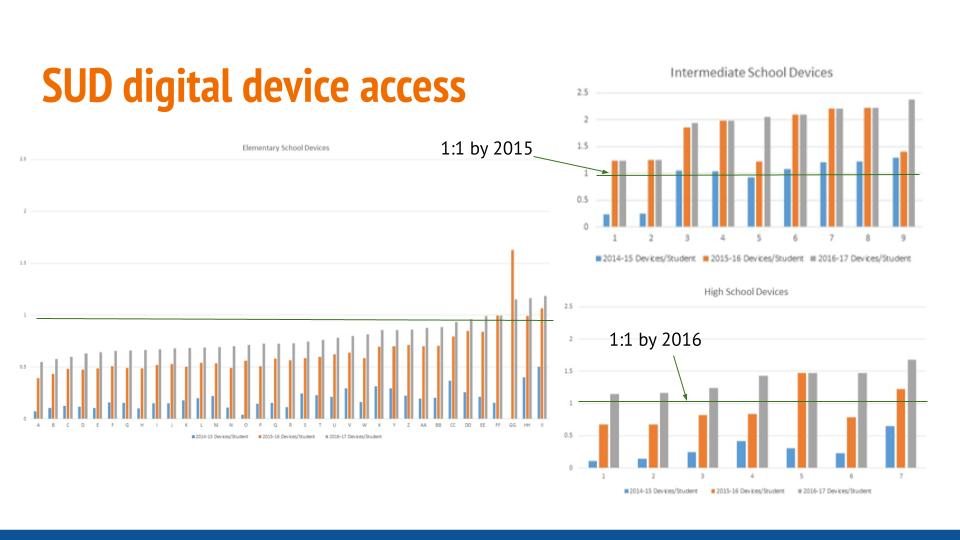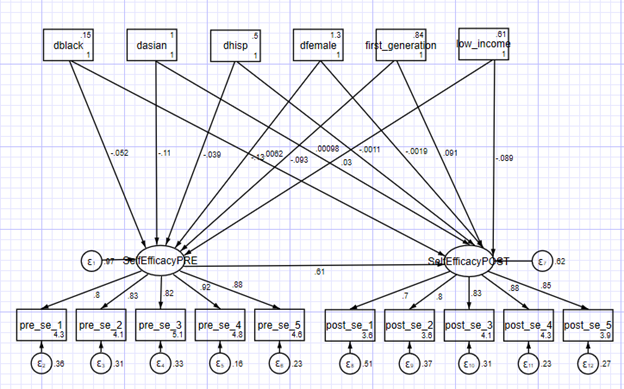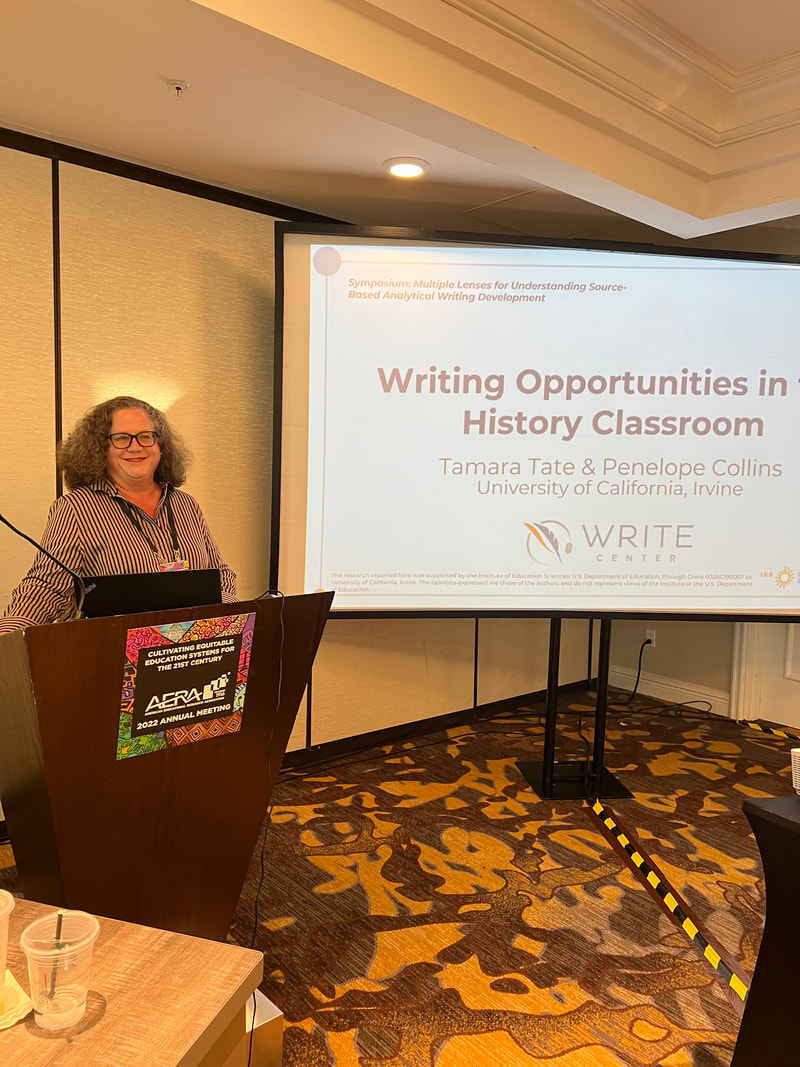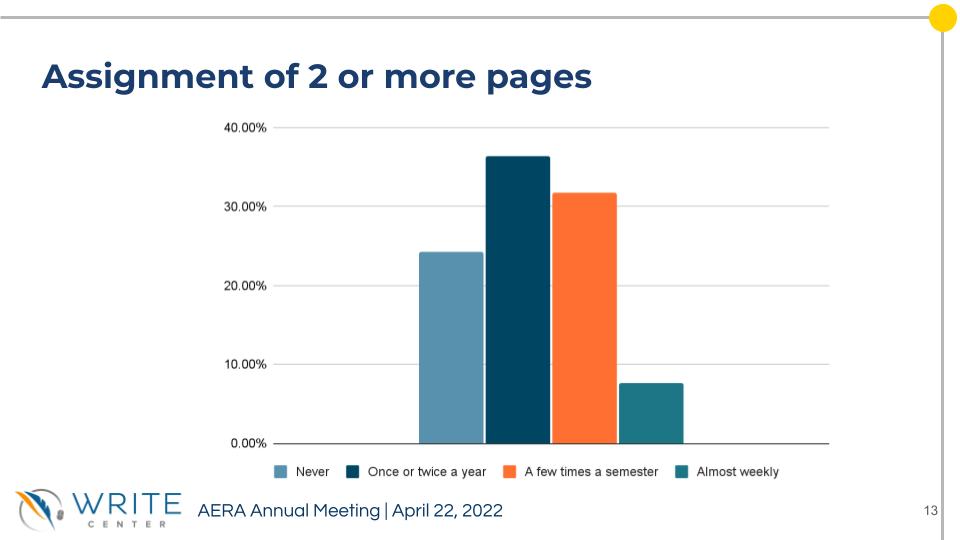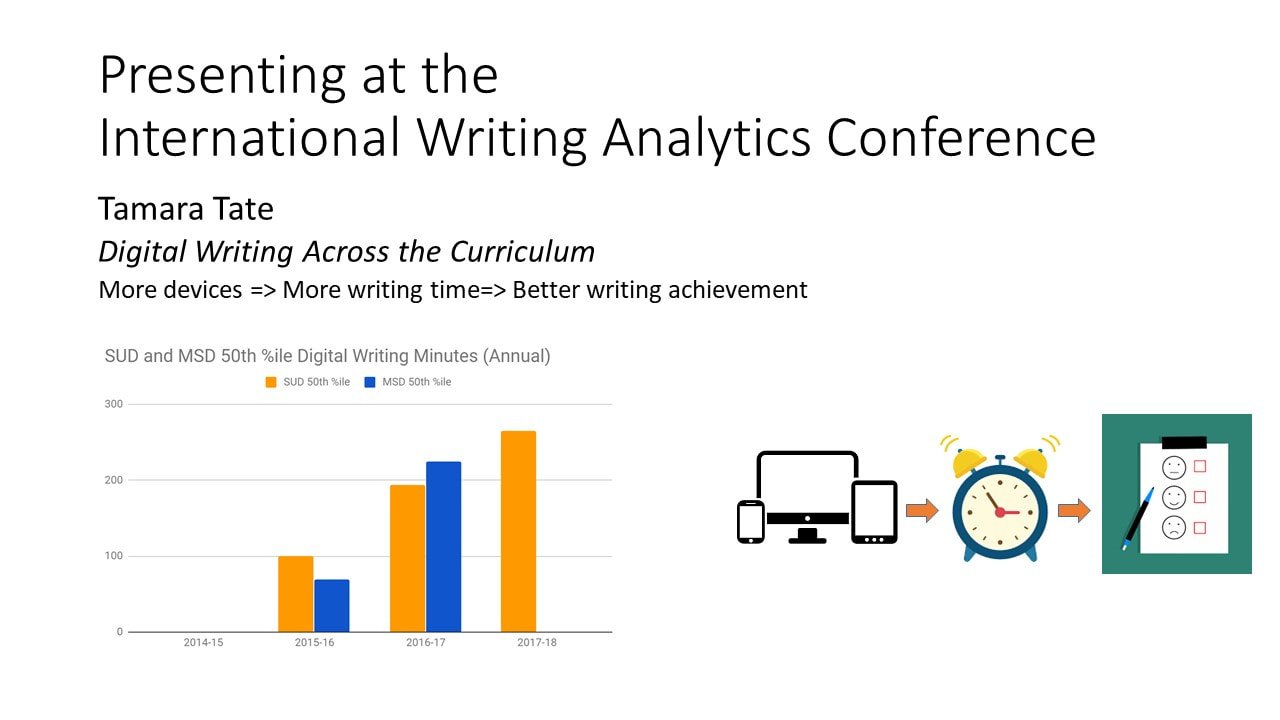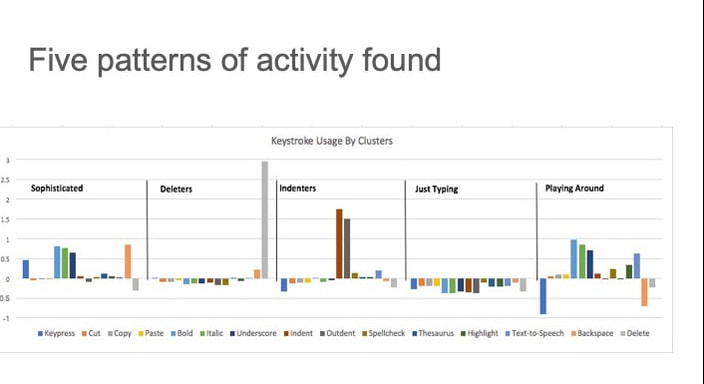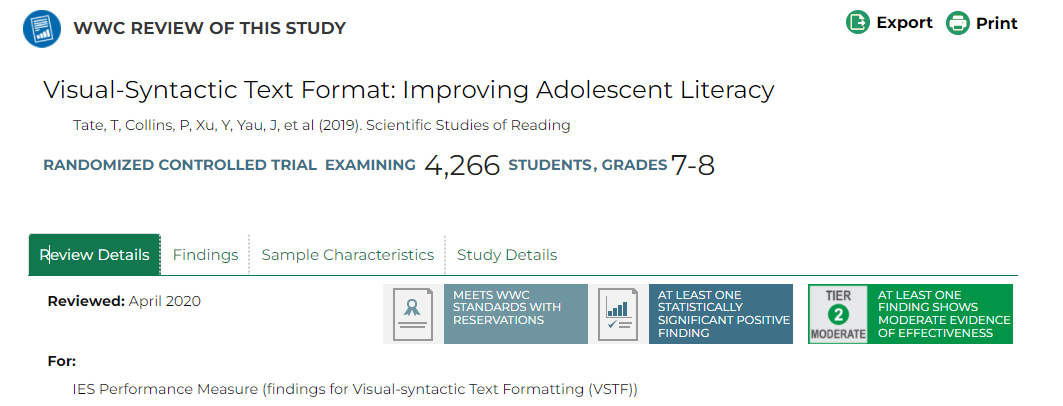Equity in Online Learning: Tate, T.P. & Warschauer, M. (2022), Equity in online learning. Educational Psychologist, 57(3), 192-206. Special issue, "Diverse Lenses on Improving Online Learning Theory, Research, and Practice."
|
Online learning outcomes have indicated both a gap between online and face-to-face learning and the amplification of this gap for low-income and minority learners. Evidence from studies across K-16 reveals equity issues regarding access to online courses; student attendance and achievement; and, most recently, the impact of the pandemic. This paper uses Warschauer’s (2003) conceptual framework of resources that shape digital inclusion—physical, human, and social — to conceptualize the equity concerns that arose during the pandemic-induced shift to emergency distance learning. This framework reveals equity issues across all three areas from abruptly moving millions into online learning environments without requisite access to up-to-date computers and broadband internet access, the skills needed to succeed in less structured online classes, or teachers trained to effectively conduct classes online. Finally, we leverage Warschauer’s framework to discuss ways to address these concerns and increase equity in online learning, as well as directions for research.
|
Digital Writing Access: Tate, T., & Warschauer, M. (2022). Access, digital writing, and achievement: The data in two diverse school districts. Journal of Writing Assessment, 15(1). 10.5070/W4jwa.189J
Students must compose texts using keyboards for college and career success. This study focuses on writing done in two school districts by students in Grades 4-11 on Google Docs to understand the relationships among digital device access, digital writing time, and standardized English language arts assessment scores. Our data cover three academic years: 2014-15, 2015-16, and 2016-17. We describe the amount of time spent writing in this mode and how it changed over grade levels and the relationship between Google Docs writing time and access to digital devices. Using fixed-effects regression, the amount of time spent writing digitally increased significantly during this time. Males and English learners spent fewer minutes writing in Google Docs compared to females and fluent English speakers. Students of color tended to spend more time writing in this mode than our White students. Device density (the number of school-provided digital devices per student) predicted the number of writing minutes in the first two, but not the third, years of our data. This study increases our foundational knowledge about the time spent by students on writing in this modality during a time in which these districts began to significantly adopt digital technology.
Student Responses to Emergency Distance Learning: “I just didn’t feel like a student anymore," Tamara Tate, Peter McPartlan, Rachel Baker, Joseph Aubele, & Mark Warschauer (2022), Peabody Journal of Education, 97(3), 369-380.
This paper describes the results of surveys and interviews from over 1800 students in five large STEM classes at a research university when classes abruptly moved online for spring quarter 2020 due to the Covid-19 pandemic. We examine how students' expectations compared to their realities at the end of the quarter; what factors impacted their spring 2020 quarter; and students’ academic sense of belonging, self-efficacy, cost of engagement, and effort regulation in spring 2020. We contextualize students’ experiences of emergency distance learning (EDL) through quantitative comparisons to previous quarters, open survey responses, and interviews. We also examine heterogeneity with respect to race/ethnicity, gender, first-generation college students, and students from low-income families. We find that there are reasons to expect increased achievement gaps post-EDL, but we also find examples of resiliency and improved self-regulated learning that will be life-long assets for students. Our goal in this paper is to use exploratory findings from one particular context to help identify potential ways to disrupt the reproduction and deepening of educational inequality exacerbated by the crisis, and educational opportunities in these unconventional times.
Hybrid Professional Development
This recent Edutopia article explains the "Keys to successful professional learning." We urge districts to ensure that professional learning be aligned with five research-based drivers:
- The content is relevant, useful, and timely.
- Teachers have agency and autonomy.
- Cycles of learning allow for practice, reflection, and adaptation.
- Foster social connection and active learning.
- Base experience on a quality technology platform.
Personalized Professional Learning Pathways
This project researched the impact of providing teachers the choice of completing a professional learning pathway on building teachers’ capacities and improving teaching and learning. We employ both quantitative and qualitative methods to understand teachers’ experiences and program evaluation. Learning pathways include synchronous online sessions, asynchronous online materials, videotaped lessons of teachers’ implementing the course materials, and personal coaching to improve teachers’ implementation. Our first report in March 22 can be found here. The second report focusing on The Challenges of Measuring Personalized Professional Learning is here and the third report Lessons from the LUSD Personalized Professional Learning Pathways focusing on our qualitative findings is here.
Despite the stressors that learning facilitators have experienced during this pandemic, they dedicated a great deal of time and energy to the key content areas covered by the Pathways. Unlike traditional, one-size-fits-all professional learning, the personalized, flexible, and multimodal learning of the Pathways allowed learning facilitators to carve out time and take advantage of the opportunity. Working as a community to delve into these important topics created a space for them to practice and reflect on authentic solutions to real issues for their learners.
Districts planning personalized professional learning are encouraged to:
While not every learning facilitator will have the time or bandwidth to participate in all professional learning opportunities, we believe that making these opportunities available contributes to an environment of continuous learning and improvement.
Despite the stressors that learning facilitators have experienced during this pandemic, they dedicated a great deal of time and energy to the key content areas covered by the Pathways. Unlike traditional, one-size-fits-all professional learning, the personalized, flexible, and multimodal learning of the Pathways allowed learning facilitators to carve out time and take advantage of the opportunity. Working as a community to delve into these important topics created a space for them to practice and reflect on authentic solutions to real issues for their learners.
Districts planning personalized professional learning are encouraged to:
- Focus on authentic, relevant content to allow learning facilitators to address the most pressing needs of their learners;
- Provide time for cycles of learning, practice, reflection, and adaptation over substantial periods of time;
- Utilize multiple modalities (e.g., seminars, book studies, asynchronous courses) so that learning facilitators can engage more deeply and broadly in a topic than a single one-day meeting would allow;
- Include both synchronous opportunities to engage as a community and asynchronous ones to allow learning facilitators to customize the timing of their work.
While not every learning facilitator will have the time or bandwidth to participate in all professional learning opportunities, we believe that making these opportunities available contributes to an environment of continuous learning and improvement.
Presenting at AERA 2022
Writing opportunities in the history classroom, Tamara Tate & Penelope Collins. Data from 78 history teachers in a California school district regarding writing practices and instruction. doi: 10.3102/IP.22.1887623 Presentation slides.
Pandemic Learning Tips
Fall 2020, school looks different from years past--you might need to re-stock pencils and papers, but back-to-school outfits? Schools in southern California are largely required to teach remotely until they meet State guidelines for in-person instruction. With that in mind, and with an eye to online learning being a part of many K-12 students’ education, we’ve gathered some expert tips from UC Irvine’s School of Education and Online Learning Research Center.
General tips
#1: Perspective is important. Your child will have years of education. Children learn things informally that are key to future success. This is a pandemic. You are probably juggling some issues yourself. Kids feel the anxiety and stress in the air right now. Teach them how to navigate anxiety and stress with good habits -- exercise, fresh air, healthy eating, connecting with friends and family in a safe way. These habits will last a lifetime. Keep an eye on your relationships first and foremost and be kind to yourself -- even if you were trained as a teacher, teaching your own child is very different. Takeaway: Be gentle with yourself and your child. Physical and mental health are your first priority.
#2: Online learning is different. Without face-to-face interactions, it can be isolating and less engaging. Take opportunities to interact with the teacher and classmates when they are available. Online learning also requires a lot more self-regulated learning skills and independence. This is probably not a strength of most children (self-regulation is developmental and is not fully acquired until young adulthood). Online learning is also less linear and requires navigating often information-rich environments over multiple sites and apps. We have some strategies that may help (parents will do most of this in the early years, but gradually release the responsibility to your child): Master HyperDoc. Create a single Google or Word document with all the basics hyperlinked to it, ideally in the order your student (or you) will be accessing it: School website, learning management system (e.g., Canvas, Blackboard, Schoology), Google Classroom, online library, course online grade management system (e.g., Aeries). Teach your student how to add to this including how to hyperlink to websites so the information is just a click away. Setting up this early will save you time and frustration later. Put a link to it on your desktop for easy access. Calendar. Consider 3 types: Monthly for planning, a standard weekly routine, and a daily planner. Paper or digital, your choice. Whatever you use, teach your child to make notes when an assignment is due and backward plan for the steps leading up to completion (a few nice 3-5 minute videos from Cornell help explain this). After the assignment, they should reflect on what worked, if they are happy with the results, and whether they would change anything next time. Once a week (usually Sunday afternoon at my house), make a plan with your child for the next week. Go over each class’s online space (Google Classroom or learning management site) looking at announcements, the syllabus, and posted assignments. This is also a good time to check online grades and email for notes from the teacher. This helps make sure your child doesn’t fall behind and gives you a sense of the challenges for the upcoming week. If your child learns this type of planning, they will be far ahead of most college students.
Elementary
Reading. Any where, any kind, any mode. Books, magazines, comics, graphic novels, online. It all counts. Let them follow a passion -- do they love trains? Super heroes? Plants? Some libraries are allowing curbside checkout, most have digital resources you can check out. Read together. Read outloud. Read silently. Just keep reading.
Middle school
At this age, students should be learning the scheduling practices above in our general tips with supervision. This is also a great time to practice some highly effective study skills to prepare them for high school and college (see below, “High school”).
If you haven’t made sure your child understands digital literacy and safe social media practices, now is the time. Middle school students are very focused on their peers and during social distancing online may be the only way to safely connect with others (fun tips for all ages on socializing right now). There are great resources out there (check out Edutopia). Make sure to model good practices yourself--ask before you post pictures of your child.
High school
While parents of little ones may long for older children, high school counts in a way that creates additional stress--grades are a key determinant of college access. Taking challenging courses online is daunting, especially when many teachers have not been giving the resources to devote time and energy into revamping their face-to-face curriculum. Our tip for this age group: double down on the most effective and efficient study skills based on research and science.
Rigorous planning, using the general tip above is key. Knowing what the instructor expects is especially important for an online course and something your teen should learn to navigate on their own. Students will need to read the syllabus carefully and keep up with course announcements.
Have your student take the time to learn how to actively study, using self-testing (old fashioned flash cards or apps both work for this), and how to space out their study rather than cramming. We have some great resources , and we also recommend the many 10-minute Crash Course videos on Youtube that are quite well-done and cover study skills, and planning (these are accessible for even later elementary students).
Tate, T. P., & Warschauer, M. (2019). Keypresses and Mouse Clicks: Analysis of the First National Computer-Based Writing Assessment. Technology, Knowledge and Learning, 24(4), 523-543.
10.1007/s10758-019-09412-x
The quality of students’ writing skills continues to concern educators. Because writing is essential to success in both college and career, poor writing can have lifelong consequences. Writing is now primarily done digitally, but students receive limited explicit instruction in digital writing. This lack of instruction means that students fail to take advantage of the affordances of digital tools. The writing process is shaped by the tools used, which makes digital writing, to an extent, different from writing with pen and paper. To better understand students’ digital writing skills, we take advantage of the information provided by computer-based assessments—keyboard and mouse activity data. We examine the relationship between students’ use of the keyboard and mouse during the assessment and students’ writing achievement. Our data comes from the first national computer-based writing assessment in the United States, the 2011 National Assessment of Educational Progress (NAEP) assessment. Using data from over 24,100 eighth-grade students, we found that the number of keypresses had a distinct and direct effect on writing achievement scores, controlling for word count. We also identified several different patterns of keyboard and mouse activity on the computer-based NAEP assessment.
Tate, T., Warschauer, M., & Kim, Y.-S. G. (2019). Learning to compose digitally: The effect of prior computer use and keyboard activity on NAEP writing. Reading and Writing, (), 1-24 DOI 10.1007/s11145-019-09940-zWriting is critical for college and career readiness, yet secondary students in America are not good writers (National Center for Education Statistics, 2012 ). Unfortunately, researchers know relatively little about secondary students’ writing skills, and even less about their digital writing. In this study, we explored prior computer use, keyboard activity during writing, and their relations to writing achievement using the 8th grade 2011 National Assessment of Educational Progress writing assessment, the first national computer-based writing assessment for U.S. secondary students. We found that prior computer use predicted students’ writing skills directly (0.08) and indirectly (e.g., keypresses, 0.14) via keyboard activity during the test. We found differential effects for certain groups including current English learners and disadvantaged students. We also found a small positive interaction effect of prior use and keypresses on writing. That is, the benefits of prior computer use for school writing and the value of students’ additional keypresses on writing achievement were amplified when both were present.
http://link.springer.com/article/10.1007/s11145-019-09940-z
http://link.springer.com/article/10.1007/s11145-019-09940-z
Tate, T., Collins, P., Xu, Y., Yau, J., Krishnan, J., Prado, Y., Farkas, G., & Warschauer, M. (2019). Visual-Syntactic Text Format: Improving Adolescent Literacy, Scientific Studies of Reading. DOI 10.1080/10888438.2018.156170 https://doi.org/10.1080/10888438.2018.156170
Seventh and eighth grade students in a within-teacher randomized control study read from visual-syntactic formatted text for 44 minutes per week over the course of a year. On the annual state assessment, we found small statistically significant improvements on the overall English Language Arts scaled score (ES = 0.05, p<.05) and the writing assessment (ES = 0.07, p<.01) for the treatment group compared to the control group. We found no interactions between gifted, special education, or English learner classification and treatment status on the effect on overall ELA score, but our categorical and subgroup analyses showed that the use of VSTF provided a modest benefit to middle school students who were near or at grade level in the prior school year.
Tate, T. & Warschauer, M. (2108). Going Beyond “That Was Fun”: Measuring Writing Motivation, Journal of Writing Analytics, 2, 257-279.
The use of validated measures of writing motivation is imperative to improving our understanding, and development, of interventions to improve student writing utilizing motivation as a mechanism. One of the most important malleable factors involved in improving student writing is motivation, particularly for secondary school students. This note systematically examines the measures of writing motivation for students in grades 4-12 used by researchers over the last ten years and summarizes their psychometric and measurement properties to the extent provided in the underlying literature. This collection of measures and their properties and features is designed to make researchers more aware of the various options and to point out the need for additional measures.
The use of validated measures of writing motivation is imperative to improving our understanding, and development, of interventions to improve student writing utilizing motivation as a mechanism. One of the most important malleable factors involved in improving student writing is motivation, particularly for secondary school students. This note systematically examines the measures of writing motivation for students in grades 4-12 used by researchers over the last ten years and summarizes their psychometric and measurement properties to the extent provided in the underlying literature. This collection of measures and their properties and features is designed to make researchers more aware of the various options and to point out the need for additional measures.
Tate, T., Warschauer, M., & Abedi, J. (2016).
The Effects of Prior Computer Use on Computer-Based Writing: The 2011 NAEP Writing Assessment, Computers & Education, 101, 115-131.
doi:10.1016/j.compedu.2016.06.001
The Effects of Prior Computer Use on Computer-Based Writing: The 2011 NAEP Writing Assessment, Computers & Education, 101, 115-131.
doi:10.1016/j.compedu.2016.06.001
Writing achievement levels are chronically low for K-12 students. As assessments follow the transition to computer-based writing, differences in technology access may exacerbate students’ difficulties. Indeed, the writing process is shaped by the tools we use and computer-based writing is different from writing with pen and paper. We examine the relationship between reported prior use of computers and students’ achievement on the first national computer-based writing assessment in the United States, the 2011 National Assessment of Educational Progress (NAEP) assessment. Using data from over 24,100 eighth grade students, we found that prior use of computers for school-related writing had a direct effect on writing achievement scores on the computer-based NAEP assessment. One standard deviation increase in prior use led to a 0.14 and 0.16 standard deviation increase in mean and scaled writing achievement scores respectively, with demographic controls and jackknife weighting in our SEM analysis. We also looked at earlier NAEP assessments and found that prior computer use did not positively affect the earlier pen and paper-based writing assessments.
Book Chapters
Tate, T.,& Warschauer, M. (2018). Digital divides and social inclusion. In K. Mills, A. Stornaiuolo, A. Smith, & J. Pandya (Eds.), Handbook of Writing, Literacies, and Education in Digital Cultures (pp. 63-75): Routlege.
Tate, T.,& Warschauer, M. (2017). One-to-one device initiatives. In K. Peppler (Ed.), The SAGE Encyclopedia of Out-of-School Learning (p. xx-xx). Thousand Oaks, CA: Sage.http://dx.doi.org/10.4135/9781483385198
Tate, T.,& Warschauer, M. (2017). Computer Access in the Home. In K. Peppler (Ed.), The SAGE Encyclopedia of Out-of-School Learning(pp. 120-121). Thousand Oaks, CA: Sage.
Tate, T.,& Warschauer, M. (2017). The digital divide in language and literacy education. In S. May (Ed.), Encyclopedia of Language and Education, Vol. 9, Language, Education and Technology, S. Thorne (Ed.) doi:10.1007/978-3-319-02328-1_5-1
Zinger, D., Tate, T.,Warschauer, M., (2017). Learning and teaching with digital media: Technological pedagogy and classroom practice. In J. Clandinin, & J. Husu (Eds.) The SAGE Handbook of Research on Teacher Education. (pp. 577-593) London, UK: SAGE
Tate, T.,& Warschauer, M. (2018). Digital divides and social inclusion. In K. Mills, A. Stornaiuolo, A. Smith, & J. Pandya (Eds.), Handbook of Writing, Literacies, and Education in Digital Cultures (pp. 63-75): Routlege.
Tate, T.,& Warschauer, M. (2017). One-to-one device initiatives. In K. Peppler (Ed.), The SAGE Encyclopedia of Out-of-School Learning (p. xx-xx). Thousand Oaks, CA: Sage.http://dx.doi.org/10.4135/9781483385198
Tate, T.,& Warschauer, M. (2017). Computer Access in the Home. In K. Peppler (Ed.), The SAGE Encyclopedia of Out-of-School Learning(pp. 120-121). Thousand Oaks, CA: Sage.
Tate, T.,& Warschauer, M. (2017). The digital divide in language and literacy education. In S. May (Ed.), Encyclopedia of Language and Education, Vol. 9, Language, Education and Technology, S. Thorne (Ed.) doi:10.1007/978-3-319-02328-1_5-1
Zinger, D., Tate, T.,Warschauer, M., (2017). Learning and teaching with digital media: Technological pedagogy and classroom practice. In J. Clandinin, & J. Husu (Eds.) The SAGE Handbook of Research on Teacher Education. (pp. 577-593) London, UK: SAGE
